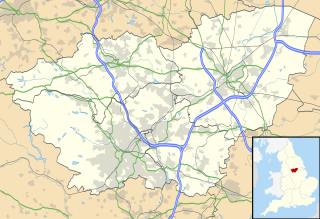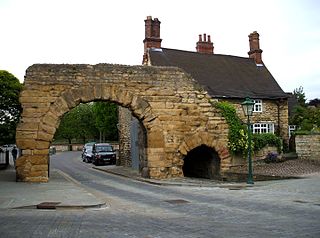Related Research Articles

Legio II Augusta was a legion of the Imperial Roman army that was founded during the late Roman republic. Its emblems were the Capricornus, Pegasus, and Mars. It may have taken the name "Augusta" from a victory or reorganization that occurred during the reign of Augustus.

In the localised Celtic polytheism practised in Great Britain, Sulis was a deity worshiped at the thermal spring of Bath. She was worshiped by the Romano-British as Sulis Minerva, whose votive objects and inscribed lead tablets suggest that she was conceived of both as a nourishing, life-giving mother goddess and as an effective agent of curses wished by her votaries.

Quintus Lollius Urbicus was a Numidian Berber governor of Roman Britain between the years 139 and 142, during the reign of the Emperor Antoninus Pius. He is named in the Historia Augusta, although it is not entirely historical, and his name appears on five Roman inscriptions from Britain; his career is set out in detail on a pair of inscriptions set up in his native Tiddis near Cirta, Numidia.
... Rufinus is the fragment of the name of a governor of Britannia Superior, a province of Roman Britain probably some time during the early third century AD. He may have been the same man as Aulus Triarius Rufinus who was suffect consul around 210, although Quintus Aradius Rufinus who was consul ten or fifteen years later is another possibility.
Modius Julius was a governor of Britannia Inferior, a province of Roman Britain during AD 219 under Elagabalus. Inscriptions at Birdoswald and Netherby attest to his rule although little else is known of him.

Templeborough is a suburb of Rotherham, South Yorkshire, England. The suburb falls within the Brinsworth and Catcliffe ward of Rotherham Metropolitan Borough Council. The area takes its name from the remains of the Roman fort found there which were mistakenly believed to be that of a Roman Temple.

Banna, now known as Birdoswald Roman Fort, was a fort, towards the western end of Hadrian's Wall, in the Roman province of Britannia. Today the site is occupied by a former farm called Birdoswald. As of 2005, it is the only site on Hadrian's Wall at which significant occupation in the post-Roman period has been proven, and it is subject to a long-term archaeological programme under the directorship of Tony Wilmott.
In ancient Celtic polytheism, Latis is the name of two Celtic deities worshipped in Roman Britain. One is a goddess, the other a god, and they are both known from a single inscription each.

Birdoswald is a former farm in the civil parish of Waterhead in the English county of Cumbria. It stands on the site of the Roman fort of Banna.

Lindum Colonia was the Latin name for the settlement which is now the City of Lincoln in Lincolnshire. It was founded as a Roman Legionary Fortress during the reign of the Emperor Nero or possibly later. Evidence from Roman tombstones suggests that Lincoln was first garrisoned by the Ninth Legion Hispana, which probably moved from Lincoln to found the fortress at York around c. 71 AD. Lindum was then garrisoned by the Second Legion Adiutrix, which then went on to Chester in 77–78 AD.

Magnis was a Roman fort on Hadrian's Wall in northern Britain. Its ruins are now known as Carvoran Roman Fort and are located near Carvoran, Northumberland, in northern England. It is thought to have been sited with reference to the Stanegate Roman road, before the building of Hadrian's Wall, to which it is not physically attached. In fact the Vallum ditch unusually goes north of the fort, separating it from the Wall.

Aballava or Aballaba was a Roman fort on Hadrian's Wall, between Petriana (Stanwix) to the east and Coggabata (Drumburgh) to the west. It is about one and a half miles south of the Solway Firth, and its purpose was to guard the south end of two important Solway fords, the Peat Wath and the Sandwath, which were also to become favourite routes for medieval border raiders.

Hadrian's Wall, also known as the Roman Wall, Picts' Wall, or Vallum Hadriani in Latin, is a former defensive fortification of the Roman province of Britannia, begun in AD 122 in the reign of the emperor Hadrian. Running "from Wallsend on the River Tyne in the east to Bowness-on-Solway in the west", the Wall covered the whole width of the island, as Jarrett A. Lobell says. In addition to the wall's defensive military role, its gates may have been customs posts.

Bewcastle Roman Fort was a Roman fort, built to the north of Hadrian's Wall as an outpost fort and intended for scouting and intelligence. The Roman name for the fort was Fanum Cocidi, and means 'The Shrine of Cocidius', a deity worshipped in northern Britain. The remains of the fort are situated at the village of Bewcastle, Cumbria, 7 miles (11 km) to the north of the Roman fort at Birdoswald, on Hadrian's Wall.
The Cohors VI Nerviorum was an auxiliary unit of Roman Army Cohors quinquagenaria peditata type attested in the Roman province of Britannia from the second century to the early fifth century AD.
Cohors PrimÆ Ælia Dacorvm was an infantry regiment of the Auxilia corps of the Imperial Roman army. It was first raised by the Roman emperor Hadrian in the Roman province of Dacia not later than AD 125 and its last surviving record dates c. 400. It was deployed, for virtually its entire history, in forts on Hadrian's Wall on the northern frontier of Britannia province.

Bar Hill Fort was a Roman fort on the Antonine Wall in Scotland. It was built around the year 142 A.D.. Older maps and documents sometimes spell the name as Barr Hill. A computer generated fly around for the site has been produced. Lidar scans have been done along the length of the wall including Bar Hill. Sir George Macdonald wrote about the excavation of the site. Many other artefacts have also been found at Shirva, about a mile away on the other side of Twechar.

Cleddans is the site of a Roman fortlet on the Antonine Wall in Scotland. Its postulated existence was confirmed by trial trenching in 1979. Evidence of building work on Cleddans and on the Wall by units of both the sixth and the twentieth legions has been found in the area.

Castlehill was a Roman fort on the Antonine Wall in Scotland.

Balmuildy is the site of a Roman fort on the Antonine Wall in Scotland. It is one of only two forts on the Antonine Wall to have been found with stone ramparts; the other is Castlecary. A digital reconstruction of the fort has been created.